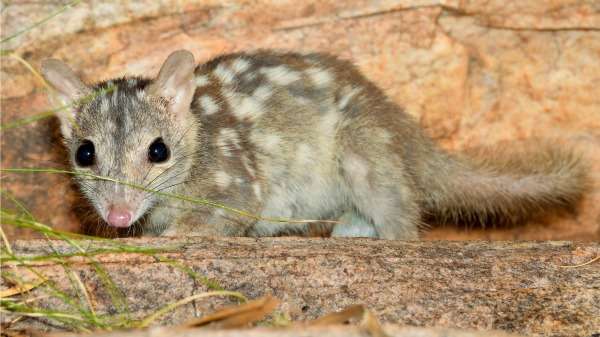Research station to unlock Kimberley wildlife secrets

The pristine Artesian Range in the north-west Kimberley region is one of the last remaining refuges for some of Australia's endangered animals, with scientists now poised to find out why.
The David Attenborough Field Research Station, opened in April 2015 by the Australian Wildlife Conservancy (AWC), will provide a base for scientists to research this unique haven.
The station will be used in the fight to protect threatened mammals such as the golden bandicoot (Isoodon auratus) and the golden-backed tree rat (Mesembriomys macrurus).
Scientists are hoping to understand why this part of mainland Australia is the only region to have escaped any known extinctions since European settlement, and to discover what makes this unusual area so protective of certain species.
By applying this knowledge to the broader mainland, it is hoped other native animals can be protected.
AWC ecologist Katherine Tuft says discoveries are already being made in the region, and the station's opening will provide unprecedented scientific opportunities to explore the mysteries of the Artesian Range.
Vulnerable and endangered species come into spotlight
Dr Tuft says animals such as the scaly-tailed possum (Wyulda squamicaudata), the black grasswren (Amytornis housei) and the northern quoll (Dasyurus hallucatus) are just some of the vulnerable and endangered species scientists are closely studying in the area.
"In fact, Monjon (Petrogale burbidgei) which is the world's smallest rock wallaby, was only discovered in the 1970s, so there is very little known about this animal and the work we are doing with this species through the new research station is some of the first research in the world," she says.
Dr Tuft says the research station and the opportunities it presents to scientists, fits in with a suite of research AWC is doing with other sanctuaries across the north of Australia.
"We are looking at areas where animals have already declined, to see if we can change land management practices in these regions to assist these species to survive," she says.
Dr Tuft says research to date has identified threats that occur across the mainland, such as fires and feral animals are not as prevalent in this hard-to-reach region.
"The topography in the Artesian Range is rugged, and we believe this makes it harder for feral cats to get in there and harder for them to hunt, allowing for survival rates of these native animals to increase," she says.
The research station acknowledges the contribution to global science made by eminent naturalist Sir David Attenborough.
Provided by Science Network WA





















